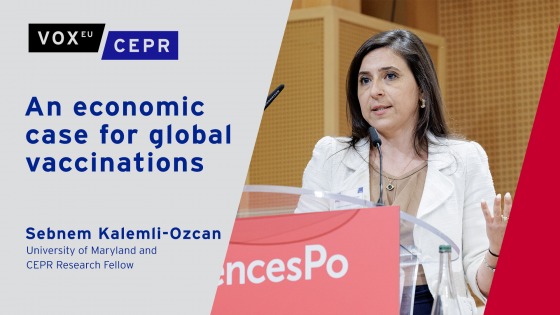In early September 2008, ministers from over 100 countries and heads of bilateral and multilateral development agencies, donor organisations, and civil society organisations from around the world will gather in Accra, Ghana, for the Third High-Level Forum on Aid Effectiveness. The stated objective? Foster “reform ownership” and make aid more transparent, accountable, and results-oriented1. Ironically, overwhelmed by aid offers and discussions, donor darling Ghana has just negotiated a mission-free period every year, giving its government two months of breathing space before it presents the budget in parliament.
Recent years have seen a rise in the complexity of donors and aid delivery channels. According to new estimates by the OECD’s Development Assistance Committee (DAC) secretariat, 38 countries had 25 or more multilateral and DAC donors in 2005-062. New official donors, mainly from oil-consuming Asian and oil-rich emerging powers, have entered the scene. So have private donors. The global development finance non-system now encompasses global programmes and non-government organisations, private philanthropy and the private commercial sector, beyond the ‘old’ bilateral and multilateral donors. Some would argue that the breakdown of the old-donor cartel is good news for poor countries as aid becomes more contestable and its supply sources more diversified. Benefits from China’s Africa engagement – more investment in infrastructure – and from new global funds – improved health outcomes – are tangible.
However, recipient-country administrations suffer from the number of interlocutors; moreover, good bureaucrats are thin, at times poached by donors, and in any case diverted from their main task: development on the ground, rather than ”development dialogue”. Knack and Rahman (2007) analyse the impact of donor fragmentation on the quality of government bureaucracy in aid-recipient countries and find that donor fragmentation leads to an erosion of bureaucratic quality.3 Using a formal model of a donor's decision to hire government administrators to manage projects, they predict that donors hire fewer administrators when their share of other projects in the country increases.
The emergence of numerous donors, modalities, and instruments makes the whole system of development finance hard to manage. While the number of aid projects by bilateral donors has skyrocketed from 10,000 to 80,000 over the past decade and harmonisation needs are blatant, the need to reform the multilateral aid bureaucracy risks being overlooked at the Accra event.
Mapping the non-system
A prerequisite for effective ownership and efficient aid delivery, at the core of the Paris Declaration on Aid Effectiveness, is to map the rising complexity of multilateral development finance, to help identify areas for consolidation, address fragmentation and poor co-ordination at country level, and help identify comparative advantages for institutional role assignments among multilateral agencies. Such mapping identifies overlaps - leading to reduction of multilateral remit or proposals for consolidation; rivalries - leading to clarification of roles; and absences of co-ordination - leading to the design and implementation of co-ordinating structure.
While the Millennium Development Goals (MDGs) agreed by UN member nations in 2000 stay out of reach for many countries, the multilateral duplication and overlap in serving the MDGs is striking, costly, and inefficient. As for the multilateral and regional development banks, the duplication in country allocation seems to have intensified, with most overlap in Central Asia. Table 1 maps the relationship between multilaterals and the MDGs, showing the key multilateral institutions that have stated objectives related to them, based on the multilaterals’ own corporate information.
Table 1 Unclear institutional assignment to the MDGs
| Selected multilaterals working on the Millennium Development Goals |
| MDG / Thematic area |
Main multilaterals |
Other multilaterals with a role |
| MDG1: Eradicate extreme poverty and hunger |
UNDP, World Bank, AfDB, AsDB, IFAD, EC, FAO, WFP |
CGIAR, IADB |
| MDG 2: Achieve universal primary education |
World Bank, UNICEF, UNESCO |
UNFPA, UNRWA |
| MDG 3: Promote gender equality and empower women |
UNDP, World Bank, UNIFEM, UNICEF |
UNFPA |
| MDG 4: Reduce child mortality |
WHO, UNFPA, UNICEF |
World Bank, WFP, UNRWA |
| MDG 5: Improve maternal health |
WHO, UNFPA |
World Bank, WFP |
| MDG 6: Combat HIV/AIDS, malaria, and other diseases |
UNAIDS, World Bank, WHO, UNDP, UNFPA, UNICEF |
UNIFEM |
| MDG 7: Ensure environmental sustainability |
UN Habitat, World Bank, AsDB, UNDP |
CGIAR, UNIDO |
| MDG 8: Develop a global partnership for development |
World Bank, EU, UNDP, UNIDO, ILO, UNCTAD |
UNDP |
| Human rights |
OHCHR |
UNIFEM |
| Conflicts and humanitarian emergencies |
UNCHR, OCHA, ECHO, WFP, UNICEF, WHO |
UNDP |
Source: OECD Development Centre, “Financing Development: Whose Ownership?”, Paris, 2008, Chapter 2.
Recipient countries have to deal not only with more donors, but also with more aid instruments, often designed by multilateral institutions favoured by the G-8. A case in point is the Debt Sustainability Framework in Low-Income Countries, which makes the World Bank’s Country Policy and Institutional Assessment (CPIA) index the dominant factor in the aid allocation to poor countries. CPIA-centred allocation of aid fails to introduce an incentives structure supportive of a genuine donor-recipient partnership. Multilateral conditionality, while acknowledged by donors to stand in the way of reform ownership, silently creeps back in through the backdoor, through policy benchmarks.
In recent years, two Multilateral Assessment Frameworks have emerged: the Multilateral Organisations Performance Assessment Network (MOPAN) and the Common Performance Assessment System (COMPAS), designed to assess the efficiency of multilateral organisations. However, these measures cannot improve the coherence of the entire (non-)system as they do not lend to inter-agency comparisons or identify clearly overlap, duplication, and mission creep. They are self-driven instruments, and they do not cut ministerial agency dependence and patronage.
International reform
Reforming the multilateral aid (non-)system will have to observe (and reduce) system complexity. Streamlining multilateral organisations should be actively considered. The Tinbergen Assignment Rule would call for institutional specialisation. Other rules are the policy and poverty selectivity of lending, reform ownership building, the subsidiarity principle of placing institutions at the local level, alignment with other donors, avoidance of country overlaps, and agency procedures such as speed of disbursement.
Few countries are on track to meet their MDGs, but many multilaterals claim to be working on them, so will they be held accountable when the MDGs go unmet? Developing quantitative and qualitiative measures of multilaterals’ contributions would be a useful step in promoting accountability; policy and poverty selectivity, as suggested by Collier and Dollar (2004), are prime candidates for such measures4. This would provide a basis to specialise multilateral agencies in line with the Tinbergen Rule along the MDGs.
Conclusion
Realistically, reform must start from outside, as vested interests in agency survival are strong. To make advances in streamlining the current (non-) system, existing circles of institutional patronage need to be broken. This requires a summit-level initiative that goes beyond the level of ministers (who are likely to defend ‘their’ international organisation). The many global tasks confronting world political leaders today – such as poverty reduction, global health, education for all, a clean environment – cannot be solved when yesterday’s institutions duplicate with new players. New approaches to global governance require a more inclusive, representative, and simplified system of multilateral development finance.
1 For a more detailed analysis, in particular on the difficulties for both donors and developing-country governments to put the principle of ‘ownership’ into practice, see OECD Development Centre “Financing Development 2008: Whose Ownership?”, Paris, 2008.
2 OECD Development Assistance Committee, Aid Fragmentation, Aid Allocation and Aid Predictability, Paris, 2008.
3 Knack, Stephen and Aminur Rahman (2007), 'Donor Fragmentation and Bureaucratic Quality in Aid Recipients', Journal of Development Economics, 83: 176-197.
4 Collier, Paul, and David Dollar, “Aid Allocation and Poverty Reduction”, European Economic Review, 46.8: 1475-1500.



